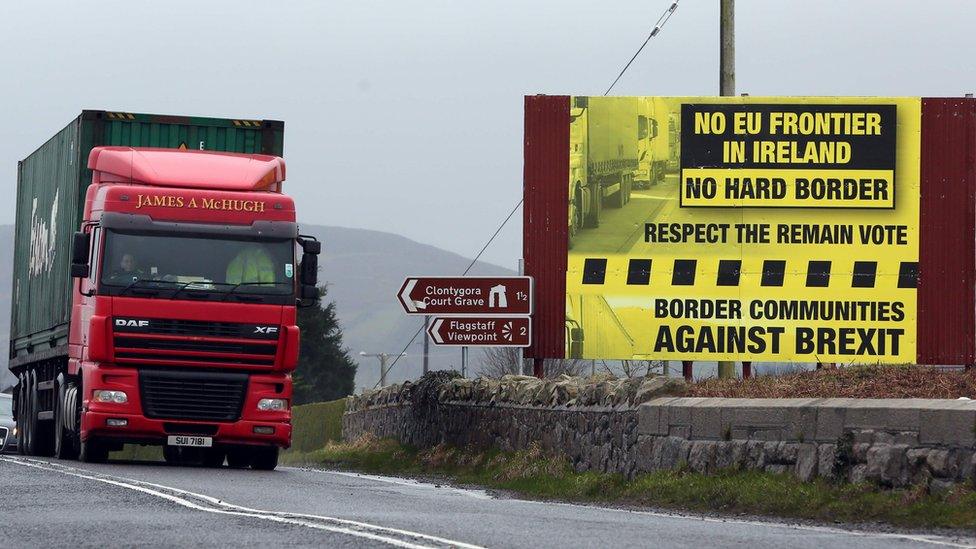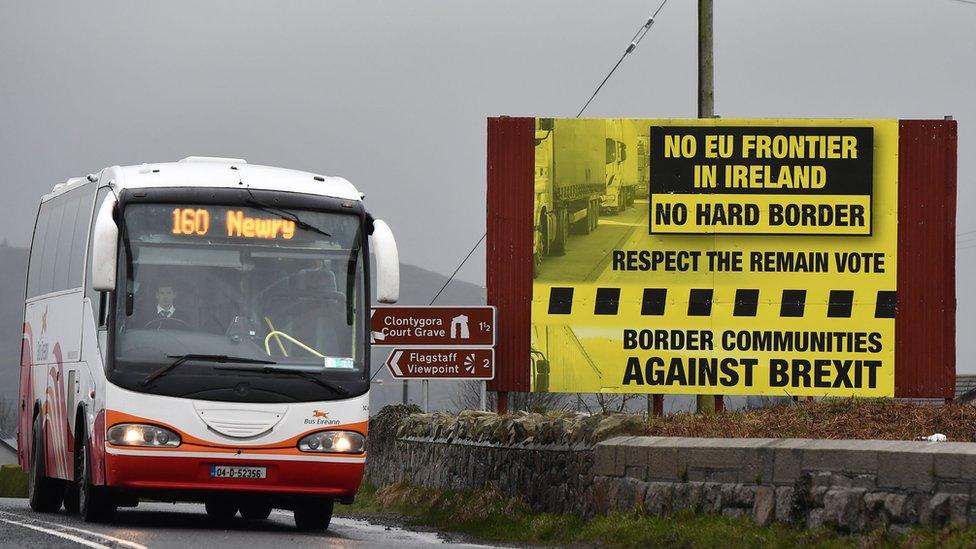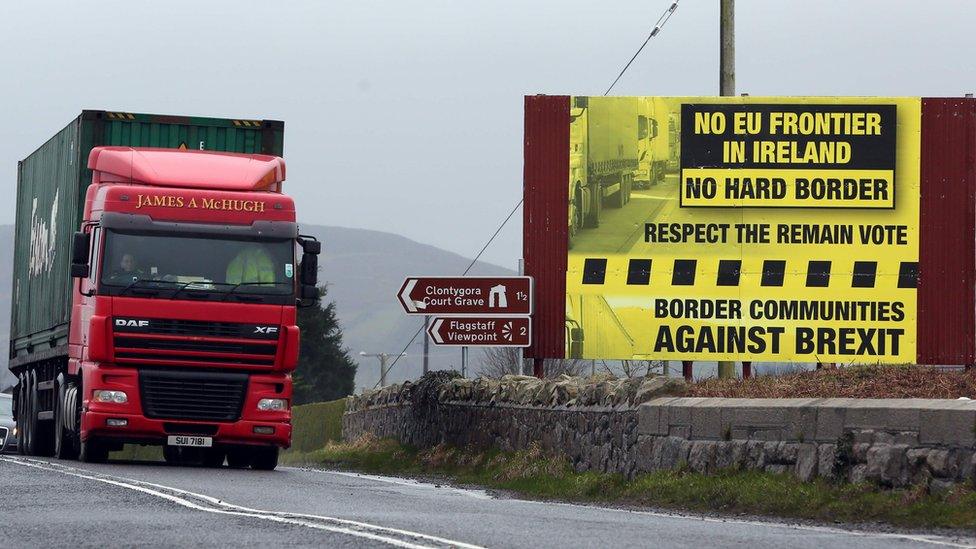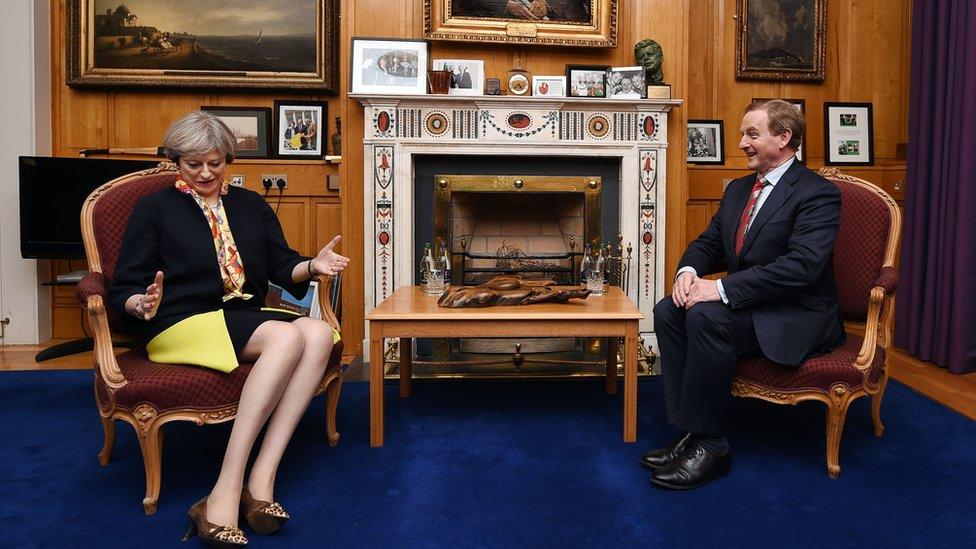Brexit: Sites for possible Irish border checkpoints examined
- Published

Both the British and Irish governments have made clear that they do not want a return to what they have called the "borders of the past"
Work has begun to identify places where customs checkpoints could be set up once again on the Irish border, in preparation for the UK leaving the EU.
The Irish government has made clear it is only contingency work.
It said, at this stage, it does not envisage a return of customs officers along the border.
On Wednesday, Taoiseach (PM) Enda Kenny said he was confident the EU would not allow "one of the most divisive borders in the world" to be reimposed.
However, Finance Minister Michael Noonan has confirmed to a parliamentary committee that contingency plans are being drawn up in the light of the Brexit vote.
'Stark situation'
Mairead McGuinness, vice president of the European Parliament and an MEP for the government Fine Gael party in Ireland, said planning had to take place.
"What the finance minister said very clearly is that, at a technical level, the officials are looking at contingency planning because of the outcome of the referendum in the United Kingdom, but there is no policy decision or drive to implement any of these technical issues," she said.
"The taoiseach, and indeed the finance minister, is very well aware that we have said that there will be no return to a hard border on the island of Ireland because of the political, economic, psychological implications of that.
"To some extent, had the concerns about Northern Ireland, and indeed of the island of Ireland, been taken into account properly in the UK referendum, we might, perhaps, not be in this very difficult and stark situation."
Both the British and Irish governments have made clear that they do not want a return to what they have repeatedly called the "borders of the past".
However, what Brexit actually means for the Irish border will only be decided in the negotiations to come between the UK and European negotiators.
During the Troubles, there were only 20 places to cross between Northern Ireland and the Republic.
But the success of the peace process has led to huge numbers of roads being reopened and there are now 260 crossing points.
- Published15 February 2017

- Published8 February 2017

- Published1 February 2017

- Published31 January 2017
